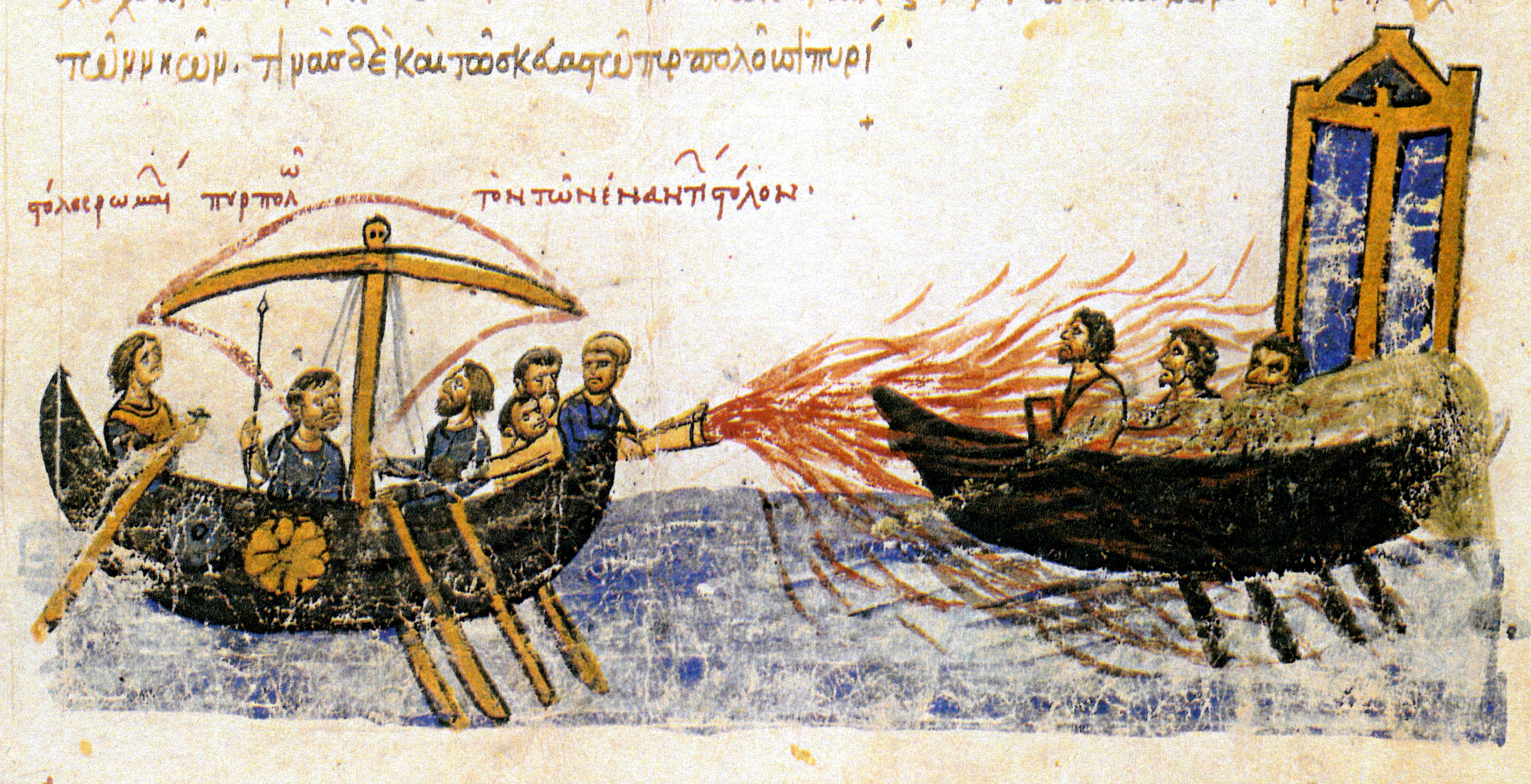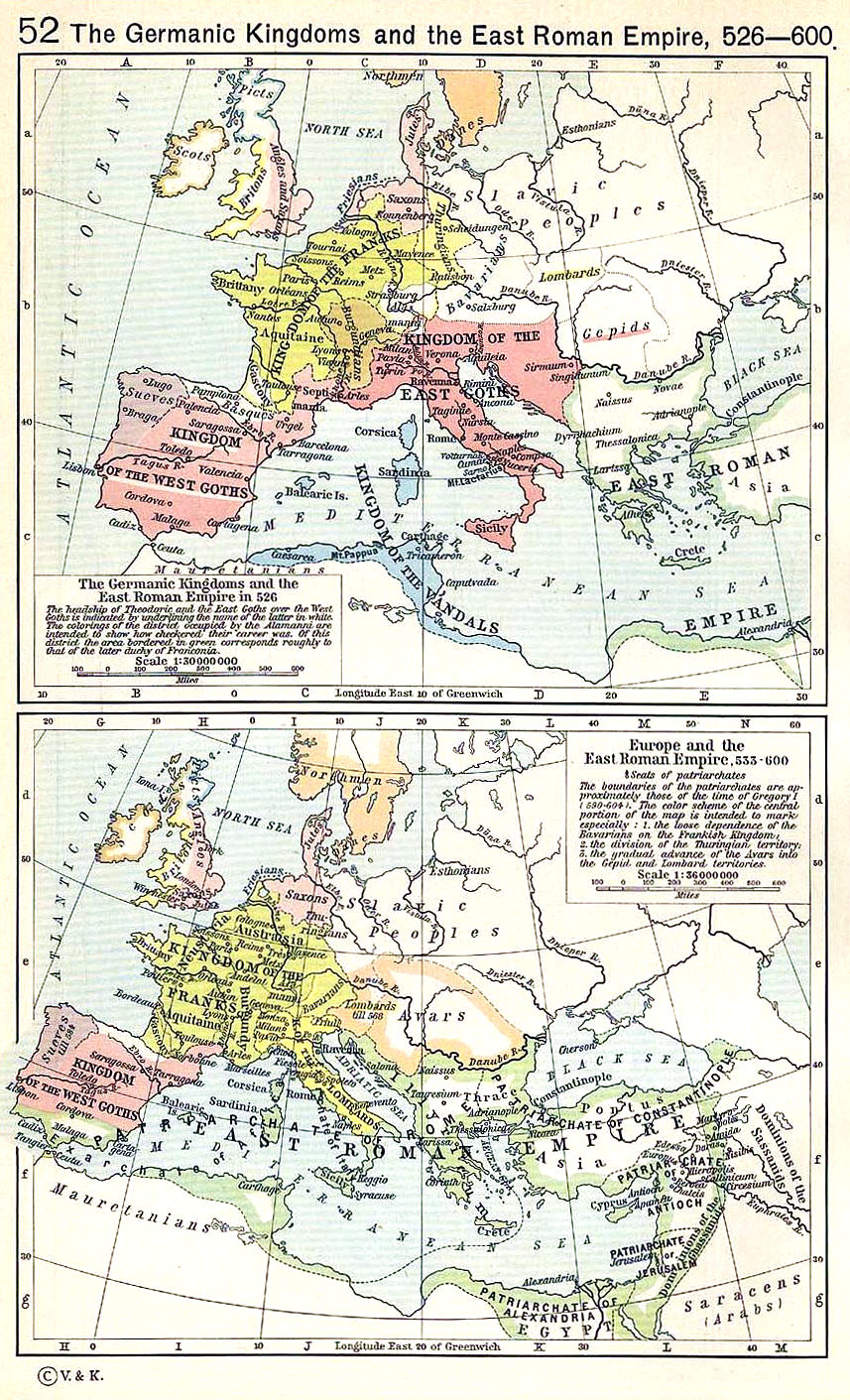|
Siege Of Constantinople (717–718)
In 717–718, Constantinople, the capital of the Byzantine Empire, was besieged by the Muslim Arabs of the Umayyad Caliphate. The campaign marked the culmination of twenty years of attacks and progressive Arab occupation of the Byzantine borderlands, while Byzantine strength was sapped by Twenty Years' Anarchy, prolonged internal turmoil. In 716, after years of preparations, the Arabs, led by Maslama ibn Abd al-Malik, invaded Byzantine Asia Minor. The Arabs initially hoped to exploit Byzantine civil strife and made common cause with the general Leo III the Isaurian, who had risen up against Emperor Theodosius III. Leo, however, deceived them and secured the Byzantine throne for himself. After wintering in the western coastlands of Asia Minor, the Arab army crossed into Thrace in the early summer of 717 and built Investment (military), siege lines to blockade the city, which was protected by the massive Walls of Constantinople#Theodosian Walls, Theodosian Walls. The Ar ... [...More Info...] [...Related Items...] OR: [Wikipedia] [Google] [Baidu] |
Tervel Of Bulgaria
Caesar Tervel (), also called Tarvel, Terval, or Terbelis in Byzantine Empire, Byzantine sources, was the ruler Caesar (title), Caesar of History of Bulgaria, Bulgaria during the First Bulgarian Empire at the beginning of the 8th century. In 705 Emperor Justinian II named him Caesar (title), caesar, the first foreigner to receive this title.Хан Тервел – тема за кандидат студенти He was raised a pagan like his grandfather Khan (title), Khan Kubrat,s:История славянобългарска, „История славянобългарска“, св.Паисий Хилендарски, 18 век."Българите", докум. филм, реж. и сценарист П. П� ... [...More Info...] [...Related Items...] OR: [Wikipedia] [Google] [Baidu] |
Southeastern Europe
Southeast Europe or Southeastern Europe is a geographical sub-region of Europe, consisting primarily of the region of the Balkans, as well as adjacent regions and Archipelago, archipelagos. There are overlapping and conflicting definitions of the region, due to political, economic, historical, cultural, and geographical considerations. Sovereign state, Sovereign states and territories that may be included in the region are Albania, Bosnia and Herzegovina, Bulgaria, Croatia (alternatively placed in Central Europe), Greece (alternatively placed in the broader region of Southern Europe), Kosovo, Montenegro, North Macedonia, Romania (alternatively placed in Eastern Europe), Serbia, and the East Thrace, European part of Turkey (alternatively placed in the broader region of Southern Europe, also in West Asia, Western Asia with the rest of the country). Sometimes, Cyprus (most often placed in West Asia), Hungary (most often placed in Central Europe), Moldova (most often placed in Easte ... [...More Info...] [...Related Items...] OR: [Wikipedia] [Google] [Baidu] |
Disease
A disease is a particular abnormal condition that adversely affects the structure or function (biology), function of all or part of an organism and is not immediately due to any external injury. Diseases are often known to be medical conditions that are associated with specific signs and symptoms. A disease may be caused by external factors such as pathogens or by internal dysfunctions. For example, internal dysfunctions of the immune system can produce a variety of different diseases, including various forms of immunodeficiency, hypersensitivity, allergy, allergies, and autoimmune disorders. In humans, ''disease'' is often used more broadly to refer to any condition that causes pain, Abnormality (behavior), dysfunction, distress (medicine), distress, social problems, or death to the person affected, or similar problems for those in contact with the person. In this broader sense, it sometimes includes injury in humans, injuries, disability, disabilities, Disorder (medicine) ... [...More Info...] [...Related Items...] OR: [Wikipedia] [Google] [Baidu] |
Famine
A famine is a widespread scarcity of food caused by several possible factors, including, but not limited to war, natural disasters, crop failure, widespread poverty, an Financial crisis, economic catastrophe or government policies. This phenomenon is usually accompanied or followed by regional malnutrition, starvation, epidemic, and increased death, mortality. Every inhabited continent in the world has experienced a period of famine throughout history. During the 19th and 20th centuries, Southeast Asia, Southeast and South Asia, as well as Eastern Europe, Eastern and Central Europe, suffered the greatest number of fatalities due to famine. Deaths caused by famine declined sharply beginning in the 1970s, with numbers falling further since 2000. Since 2010, Africa has been the most affected continent in the world by famine. As of 2025, Haiti and Afghanistan are the two states with the most catastrophic and widespread states of famine, followed by Palestine (confined to Gaza Strip ... [...More Info...] [...Related Items...] OR: [Wikipedia] [Google] [Baidu] |
Greek Fire
Greek fire was an incendiary weapon system used by the Byzantine Empire from the seventh to the fourteenth centuries. The recipe for Greek fire was a closely-guarded state secret; historians have variously speculated that it was based on saltpeter, sulfur, or quicklime, but most modern scholars agree that it was based on petroleum mixed with resins, comparable in composition to modern napalm. Byzantine sailors would toss grenades loaded with Greek fire onto enemy ships or spray it from tubes. Its ability to burn on water made it an effective and destructive naval incendiary weapon, and rival powers tried unsuccessfully to copy the material. Name Usage of the term "Greek fire" has been general in English and most other languages since the Crusades. Original Byzantine sources called the substance a variety of names, such as "sea fire" (Medieval Greek: ), "Roman fire" ( ), "war fire" ( ), "liquid fire" ( ), "sticky fire" ( ), or "manufactured fire" ( ). History Incendiary and ... [...More Info...] [...Related Items...] OR: [Wikipedia] [Google] [Baidu] |
Byzantine Navy
The Byzantine navy was the Navy, naval force of the Byzantine Empire. Like the state it served, it was a direct continuation from its Roman navy, Roman predecessor, but played a far greater role in the defence and survival of the state than its earlier iteration. While the fleets of the Roman Empire faced few great naval threats, operating as a policing force vastly inferior in power and prestige to the Roman army, army, command of the sea became vital to the very existence of the Byzantine state, which several historians have called a "maritime empire". The first threat to Roman hegemony in the Mediterranean Sea was posed by the Vandals in the 5th century, but their threat was ended by the wars of Justinian I in the 6th century. The re-establishment of a permanently maintained fleet and the introduction of the dromon galley in the same period also marks the point when the Byzantine navy began departing from its late Roman roots and developing its own characteristic identity. Thi ... [...More Info...] [...Related Items...] OR: [Wikipedia] [Google] [Baidu] |
Walls Of Constantinople
The Walls of Constantinople (; ) are a series of defensive wall, defensive stone walls that have surrounded and protected the city of Constantinople (modern Fatih district of Istanbul) since its founding as the new capital of the Roman Empire by Constantine the Great. With numerous additions and modifications during their history, they were the last great fortification system of ancient history, antiquity, and one of the most complex and elaborate systems ever built. They were also the largest and strongest fortification in both the ancient and medieval world. Initially built by Constantine the Great, the walls surrounded the new city on all sides, protecting it against attack from both sea and land. As the city grew, the famous double line of the Theodosian Walls was built in the 5th century. Although the other sections of the walls were less elaborate, they were, when well-manned, almost impregnable for any medieval besieger. They saved the city, and the Byzantine Empire with ... [...More Info...] [...Related Items...] OR: [Wikipedia] [Google] [Baidu] |
Investment (military)
Investment is the military process of surrounding an enemy fort (or town) with armed forces to prevent entry or escape. It serves both to cut communications with the outside world and to prevent supplies and reinforcements from being introduced. A contravallation is a line of fortifications built by the attackers around the besieged fortification facing towards an enemy fort to protect the besiegers from sorties by its defenders and to enhance the blockade. The contravallation can be used as a base to launch assaults against the besieged city or to construct further earthworks nearer to the city. A circumvallation may be constructed if the besieging army is threatened by a field army allied to an enemy fort. It is a second line of fortifications outside the contravallation that faces away from an enemy fort. The circumvallation protects the besiegers from attacks by allies of the city's defenders and enhances the blockade of an enemy fort by making it more difficult to smuggl ... [...More Info...] [...Related Items...] OR: [Wikipedia] [Google] [Baidu] |
Theodosius III
Theodosius III () was Byzantine emperor from to 25 March 717. Before rising to power and seizing the throne of the Byzantine Empire, he was a tax collector in Adramyttium. In 715, the Byzantine navy and the troops of the Opsician Theme, one of the Byzantine provinces, revolted against Emperor Anastasius II (), acclaiming the reluctant Theodosius as emperor. Theodosius led his troops to Chrysopolis and then Constantinople, the capital, seizing the city in November 715. Anastasius did not surrender until several months later, accepting exile in a monastery in return for safety. Many themes viewed Theodosius to be a puppet of the troops of the Opsician Theme, and his legitimacy was denied by the Anatolics and the Armeniacs under their respective (generals) Leo the Isaurian and Artabasdos. Leo declared himself emperor in the summer of 716 and allied himself with the Umayyad Caliphate, the Islamic empire; Theodosius sought aid from the Bulgarians under Khan Tervel (), setti ... [...More Info...] [...Related Items...] OR: [Wikipedia] [Google] [Baidu] |
Leo III The Isaurian
Leo III the Isaurian (; 685 – 18 June 741), also known as the Syrian, was the first Byzantine emperor of the Isaurian dynasty from 717 until his death in 741. He put an end to the Twenty Years' Anarchy, a period of great instability in the Byzantine Empire between 695 and 717, marked by the rapid succession of several emperors to the throne, along with ending the continual defeats and territorial losses the Byzantines had suffered during the 7th century. He also successfully defended the Empire against the invading Umayyads and forbade the veneration of icons. Early life Leo III was born in Germanikeia, Commagene, which is in modern Kahramanmaraş in Turkey. His original name was Konon (). Leo’s native tongue was Syriac or Arabic and he was described by Theophanes the Confessor as "the Saracen-minded," although there is very little evidence that he was directly influenced by Islam. After the victory of Justinian II, Konon was dispatched on a diplomatic mission to A ... [...More Info...] [...Related Items...] OR: [Wikipedia] [Google] [Baidu] |
Asia Minor
Anatolia (), also known as Asia Minor, is a peninsula in West Asia that makes up the majority of the land area of Turkey. It is the westernmost protrusion of Asia and is geographically bounded by the Mediterranean Sea to the south, the Aegean Sea to the west, the Turkish Straits to the northwest, and the Black Sea to the north. The eastern and southeastern limits have been expanded either to the entirety of Asiatic Turkey or to an imprecise line from the Black Sea to the Gulf of Alexandretta. Topographically, the Sea of Marmara connects the Black Sea with the Aegean Sea through the Bosporus and the Dardanelles, and separates Anatolia from Thrace in Southeast Europe. During the Neolithic, Anatolia was an early centre for the development of farming after it originated in the adjacent Fertile Crescent. Beginning around 9,000 years ago, there was a major migration of Anatolian Neolithic Farmers into Neolithic Europe, Europe, with their descendants coming to dominate the continent a ... [...More Info...] [...Related Items...] OR: [Wikipedia] [Google] [Baidu] |








